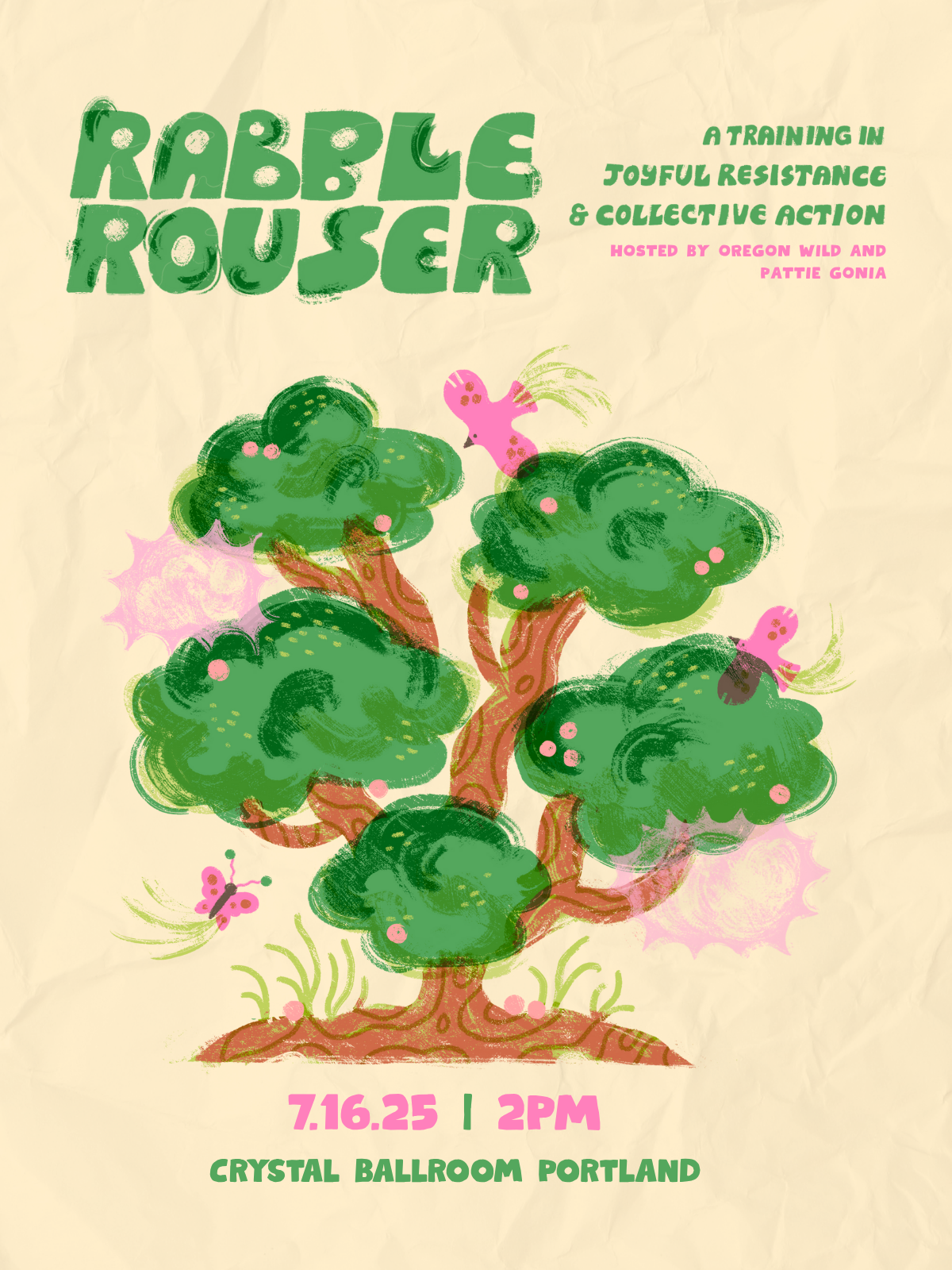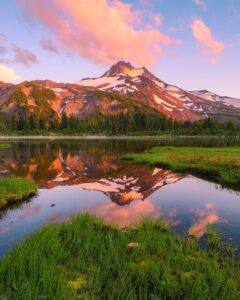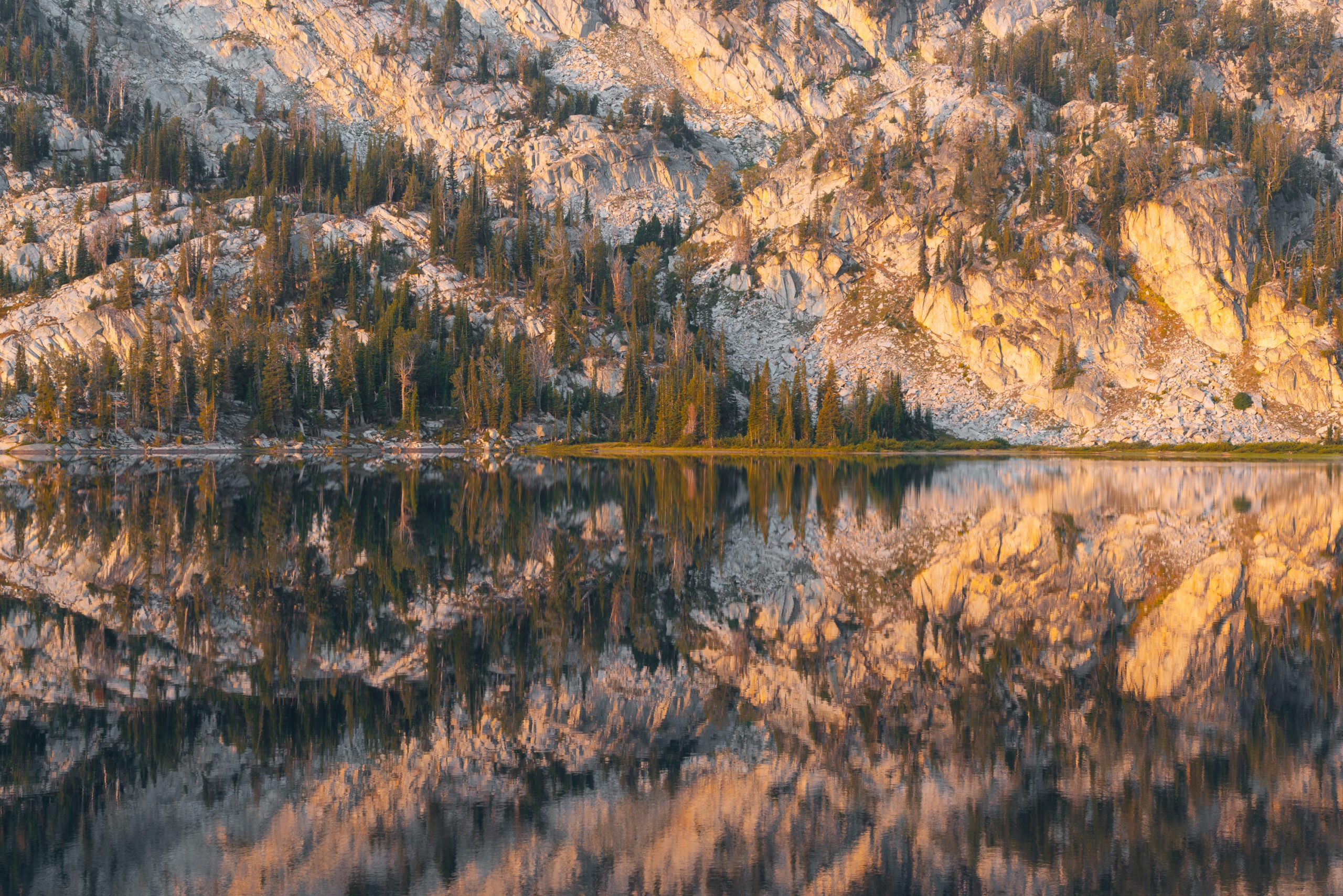Imagine the most rugged, remote, and unspoiled landscape in Oregon. A place where old-growth trees still tower above the land, where elk and other wildlife find vast areas of pristine, high-quality habitat. A place where cold, clean streams still run free and provide a home for rainbow trout and other native fish.
These kinds of wild, roadless lands are becoming harder and harder to find in Oregon. With over half of our National Forests already open to mining, logging, and other destructive development, we owe it to future generations to save what’s left.
In January 2001, following the most extensive public rulemaking process in history that included 18 months of review and analysis and 600 public hearings, the Roadless Area Conservation Rule was issued. The rule was designed to protect 58.5 million acres of National Forest land, including nearly 2 million acres here in Oregon, from most commercial development. The rule was intended to preserve the last third of undeveloped forestlands as a home for wildlife, a haven for recreation, and a heritage for future generations. Almost from the moment the rule went into effect, it was under attack. The administration of President George W. Bush did everything in its power to undermine and undo the rule. However, after a decade of legal ping pong, the Supreme Court ruled in October 2012 and rejected a mining industry appeal after a lower court had overturned the final Bush-era legal challenge. The Supreme Court’s decision made the Roadless Rule, the law of the land.

Over the last decade, nationwide debate on how to manage roadless areas has primarily focused on the 58.5 million acres of “inventoried roadless areas” in National Forests, including 2 million acres here in Oregon. Because National Forest roadless areas have not been roaded and developed, they provide us with many important benefits:
- Clean drinking water. Intact and unspoiled roadless forests protect the purity of mountain streams and provide clean and reliable drinking water to approximately 800,000 Oregonians across the state. More than 500,000 acres of Oregon’s roadless forests are located in municipal watersheds and provide water to such communities as Salem, Baker City, Lake Oswego, Pendleton, Ashland, Oregon City, Eugene, and Bend.
- Wildlife. Roadless lands provide large areas of unfragmented wildlands that are crucial to the survival of fish and wildlife. A diversity of life abounds in Oregon’s roadless lands, including elk, trout, black bears, rare plants and numerous bird species. Oregon’s roadless wildlands also provide important habitat to threatened and endangered animals such as bald eagles, chinook salmon, and marbled murrelets. Studies show that road building damages wildlife by fragmenting habitat and increasing disturbances such as vehicle use and poaching. Road building can also increase the risk of erosion and landslides, which can damage water quality and threaten habitats used by salmon, trout, and other important animals.
- Outdoor recreation. Oregon’s roadless areas, including Mount Hood, the Columbia River Gorge, the Blue Mountains, Hells Canyon, and the wild Rogue River in the Siskiyou Mountains, offer outstanding opportunities to hike, camp, hunt, fish, view wildlife and more. Their scenic beauty adds to our quality of life and forms a special part of the state’s landscape.
- Oregon’s Economy. The unique scenery, backcountry, and fish and wildlife of Oregon’s roadless wildlands draw millions of visitors each year. Money spent on travel, lodging, transportation, equipment, food, and guide services adds millions of dollars to the state’s economy, supports several brand-name outdoor recreation equipment and apparel businesses, and supplies a long-term and diverse revenue source for rural communities. Additionally, Oregon’s roadless lands provide protection to several important fish-rearing streams valued by Oregon’s commercial and recreational fishing industries. Any degradation of these roadless watersheds could negatively affect water quality and spawning and feeding habitat, and lead to significant reductions in fishery productivity.




